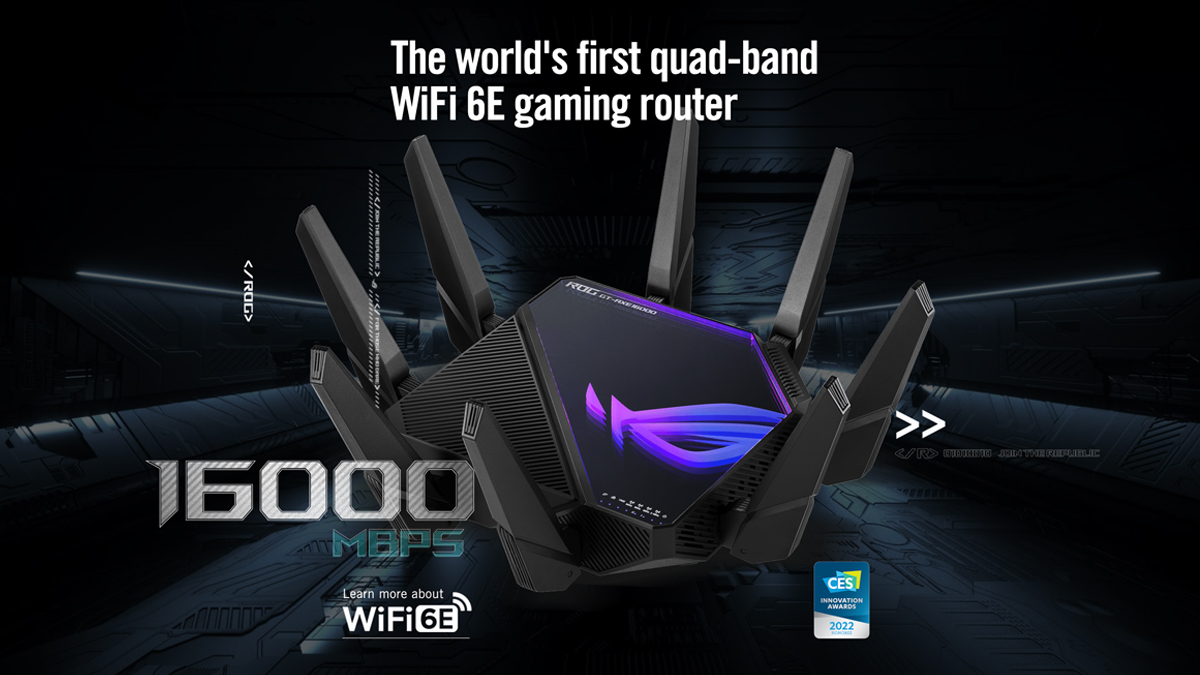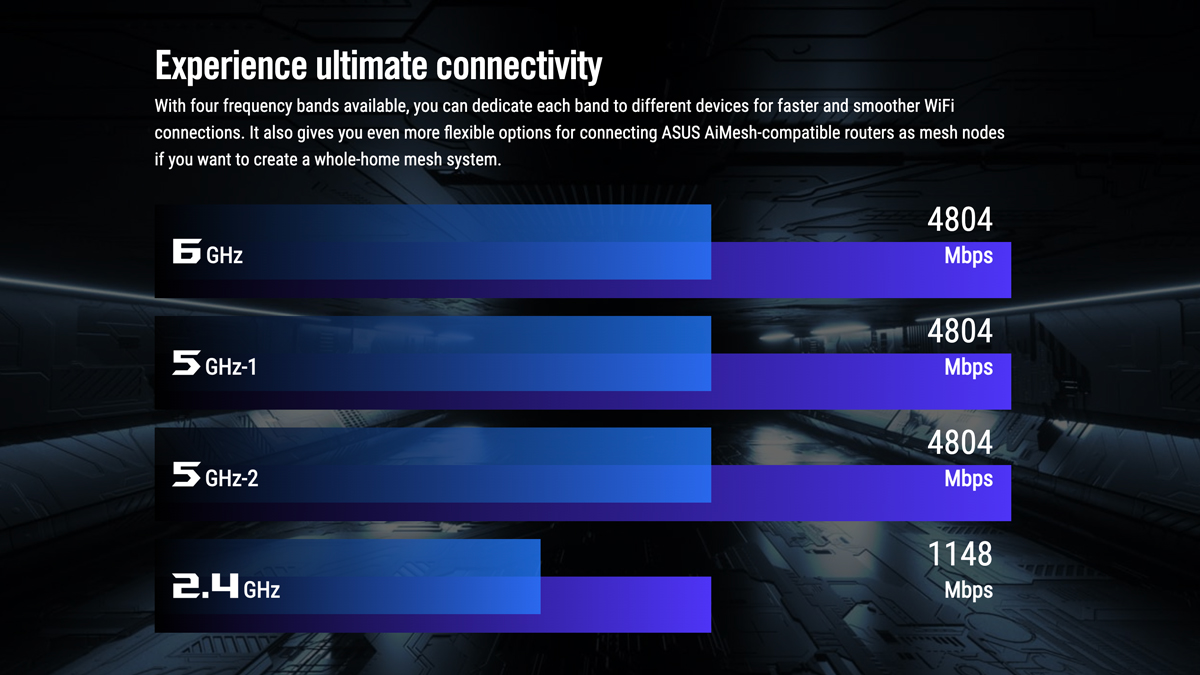There was once a time when even 1Gbps internet plans were few and far between in Malaysia, but these days you’ll be able to find many different telcos such as CelcomDigi, Time and Unifi offering 1Gbps internet plans to home users. In fact, for those of you who really, really need the best home internet plans out there, the likes of Time and Unifi are now even offering 2Gbps plans. And seeing that you’re already paying so much for that high-speed internet, you might also be thinking about getting a new WiFi6 router for your home—you know, just to make sure you’re getting every single bit per second of download speed that you signed up for.
Now before we go on to what routers you may want to consider for enjoying the best high-speed internet our telcos have to offer, it’s perhaps worth remembering that even though you may have signed up for a 2Gbps internet plan, you won’t necessarily be seeing that full 2Gbps download speeds every single time you’re surfing the web. That could be down to a multitude of reasons, such as network congestion during peak hours, server side issues, or perhaps your 2Gbps plan isn’t even a true 2Gbps plan (looking at you, Unifi).
Nevertheless, if you do want to upgrade off the telco-provided router to something with a little more gusto, or maybe you’d just like to hook it up to a more user-friendly and future-proof mesh WiFi setup, we’ve listed down a number of WiFi routers you can consider at various price points. All of these routers should be good for your 2Gbps (and 1Gbps) internet plans, though if you think we’ve missed out any other options, do let us know in the comment section below.
Best bangsawan WiFi router
ASUS ROG Rapture GT-AXE16000

The Asus ROG Rapture GT-AXE16000 just screams performance. Everything from its name to the number of antennas it has hint at its performance potential, and when you take a look at what it offers it’s clear to see why. Asus says that the ROG Rapture GT-AXE16000 is the world’s first quad-band WiFi 6E gaming router, with your regular 2.4GHz band, two 5GHz bands and the 6GHz band all available through this one device. The 2.4GHz band allows for speeds up to 1,148Mbps, while the other three bands can do up to 4,804Mbps.

By default, one of the two 5GHz bands will be used as a dedicated backhaul connection to the central router, which still leaves you with full triband access to the 2.4GHz, 5GHz and 6GHz band. Alternatively, you can also get Asus AiMesh nodes and set up a 6GHz backhaul connection for an optimised mesh experience. Powered by a quad-core 64-bit CPU with 2GB of RAM, the ROG Rapture GT-AXE1600 also offers plenty in terms of ports too, with two 10 gigabit WAN/LAN ports, a 2.5 gigabit WAN port, four gigabit LAN ports, a USB 3.2 Gen 1 port and a USB 2.0 port on the back.

Other features of note include Asus RangeBoost Plus with next-gen Broadcom chipsets for improved WiFi coverage by up to 38% compared to previous generation routers, prioritisation for game devices and game packets to ensure the lowest latency possible during those crucial team fights, VPN Fusion which lets you run both a VPN and an ordinary internet connection at the same time and of course, who can forget the all important infinity mirror on the top with RGB lighting. Parents will also be pleased to know that you’ll find the Asus AiProtection Pro feature here too for not only the more secure WPA3 security protocol but also some advanced parental controls, all of which can be controlled via the Asus Router app.
Of course, all of these features don’t come cheap, which is exactly why we’ve listed this as the best “bangsawan” WiFi router out there. Available for RM3,388 from the official Asus Malaysia store on Shopee at time of writing, the ROG Rapture GT-AXE16000 is likely only for the few of you out there who already have either 1Gbps or 2Gbps internet plans, and want to get the absolute best performance at any cost for the slightest edge in competitive gaming.
Best high-end WiFi router
Asus ZenWiFi AX XT8

The next WiFi router on our list is actually one that we can recommend and indeed have recommended before—the Asus ZenWiFI AX XT8. Available for as low as RM1,109 on Shopee for a single unit kit, we’d actually suggest you get the twin-pack instead that goes for around the RM1,999 on the platform instead. That’s because we’ve actually already reviewed the ZenWiFI AX XT8 before, and overall we found that it is a dependable mesh WiFi solution for anyone looking for a high-performance and reliable setup for your home.

Unlike the ROG Rapture that goes all out with its gamer aesthetic, the ZenWiFI AX XT8 is a much sleeker unit, with a single unit covering up to 2,750ft² and a pair of them in a mesh WiFI setup able to cover up to 5,500ft². It offers a tri-band setup, but not with WiFi 6E support so it’s a little lacking in that regard. Instead, you get a 2.4GHz band offering speeds up to 574Mbps, alongside a 5GHz band offering up to 1,201Mbps and another 5GHz band offering speeds up to 4,804Mbps. However, like the ROG Rapture, one of these 5GHz bands will be for backhaul connection by default.

Other features of note here include four RJ45 ports—three gigabit ports and a 2.5 gigabit port—along with a USB 3.1 Gen 1 port for I/O. It also uses Asus’ AiMesh system for setting up mesh nodes, and you’ll want to set things up with the Asus Router app too, allowing the user to control other features like AiProtection Pro, setting up parental control, checking your connection status, set up guest WiFi networks and more. Overall, just like Alex said in his review of the ZenWiFi AX XT8, they really were a cure for our WiFi headaches in the office.
Best value WiFi router under RM1,000
TP-Link Archer AX95

The TP-Link Archer AX95 on the other hand isn’t focused on creating a mesh network out of the box, though as we’ll get to later you can still do that. Instead, the Archer AX95’s main focus is merely to deliver as much performance as it can. Officially priced at RM1,099 but available for as low as RM899 from the official TP-Link Shopee store at time of writing, the Archer AX95 is a no nonsense, tri-band WiFi 6 router.

Powered by a 1.7GHz quad-core chip under the hood, the AX95 offers a tri-band setup with its 2.4GHz band capable of speeds up to 574Mbps, while the first 5GHz band offers speeds up to 2,402Mbps, with the third 5GHz 160MHz channel capable of 4,804Mbps speeds. On the back you’ll find quite a lot of I/O, with a 2.5 gigabit WAN/LAN port, a 1 gigabit WAN/LAN port, and another three gigabit LAN ports as well as a USB 3.0 and a USB 2.0 port.

TP-Link claims that with the eight high-gain antennas on the Archer AX95, you should be getting enough coverage from this one router to cover a four-bedroom house. However, if you do need more coverage from your WiFi network, the Archer AX95 comes with support for TP-Link’s OneMesh lineup of products, allowing to you add on mesh WiFi nodes to the Archer AX95 down the line if you need more coverage. You do also get TP-Link HomeShield which has a real time network scanner to detect any potential threats as well as set up parental controls, but if you want more security features it will cost you a monthly subscription fee to get HomeShield Pro.
Mercusys Halo H80X

Perhaps one of the more value-focused options if you’re seeking a mesh WiFi router system with support for speeds of up to 2Gbps is the Mercusys Halo H80X. Available in a 2-pack for as low as RM589 on places like Shopee and RM849 for the 3-pack kit, the Halo H80X is, on paper at least, a no-frills dual band mesh WiFi 6 router that should be more than enough for most homes.
Supporting up to the WiFi 6 standard, it offers transfer speeds up to 2,402Mbps on the 5GHz band and up to 574Mbps on the 2.4GHz band. There’s also three full gigabit WAN/LAN ports on the back, though no USB ports here. You’ll want to get the Mercusys app which you can use to set up the Halo H80X as well as to check on the status of the devices connected to your network, the signal strength, create a guest network as well as get alerts whenever there’s a new device accessing your network. You can also use it to manage various parental controls on your network if you need to look out for how much time they’re spending online and what sites they’re accessing.
Perhaps the best part though about the Halo H80X is really the ease of setting up. Using just the app you can easily set up multiple Halo H80X units to cover up to 5,000ft² with Mercusys claiming that the multiple Halo setup will automatically connect your device to the fastest node. In fact, you won’t even need multiple H80X nodes—you can get the H80X twin pack today, and if needed get another Halo H series device to add on as satellite nodes.
In the meantime, if you’re still considering which fibre plan to upgrade to, check out our video on the best fibre broadband plans available in Malaysia below:








